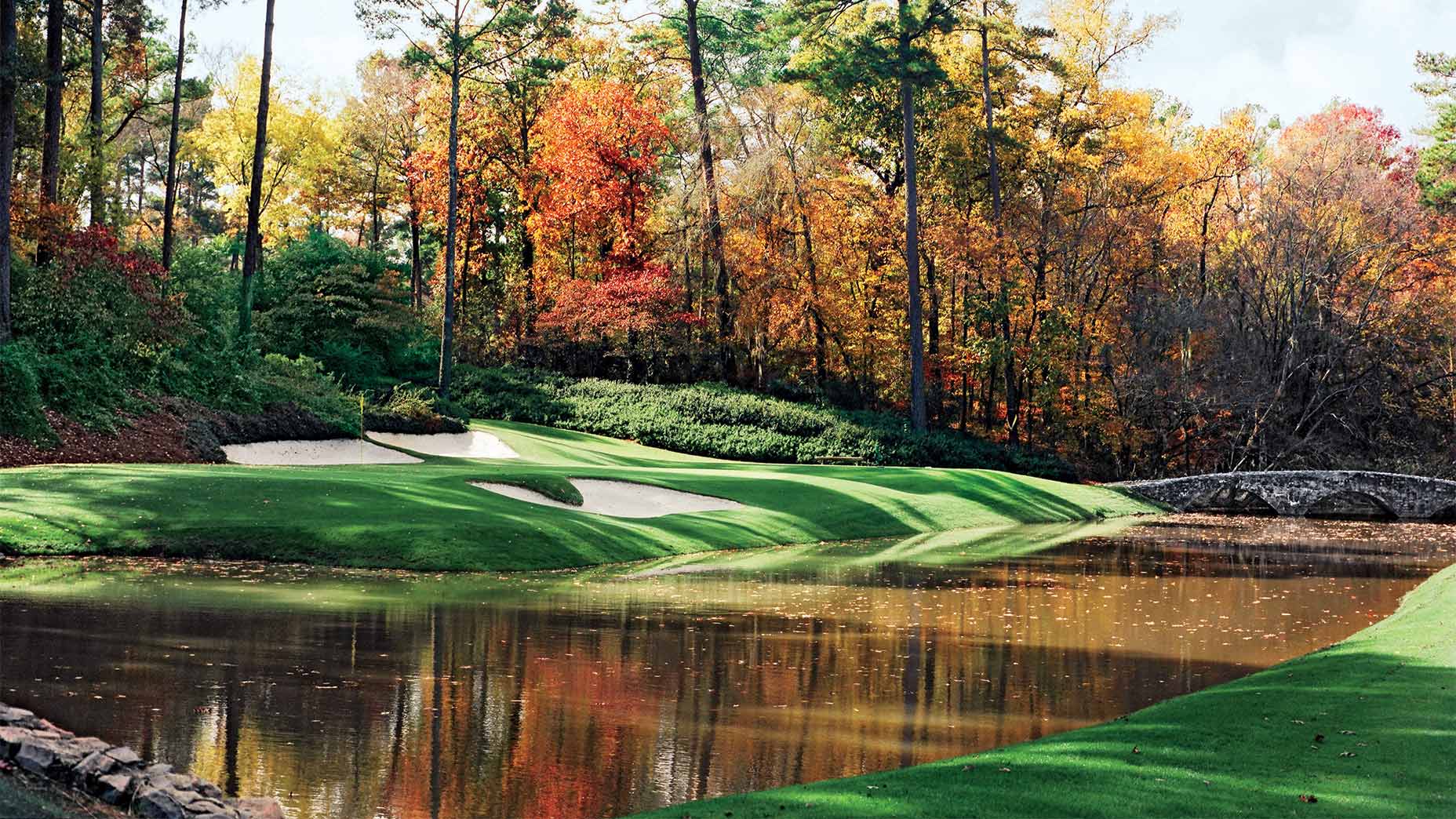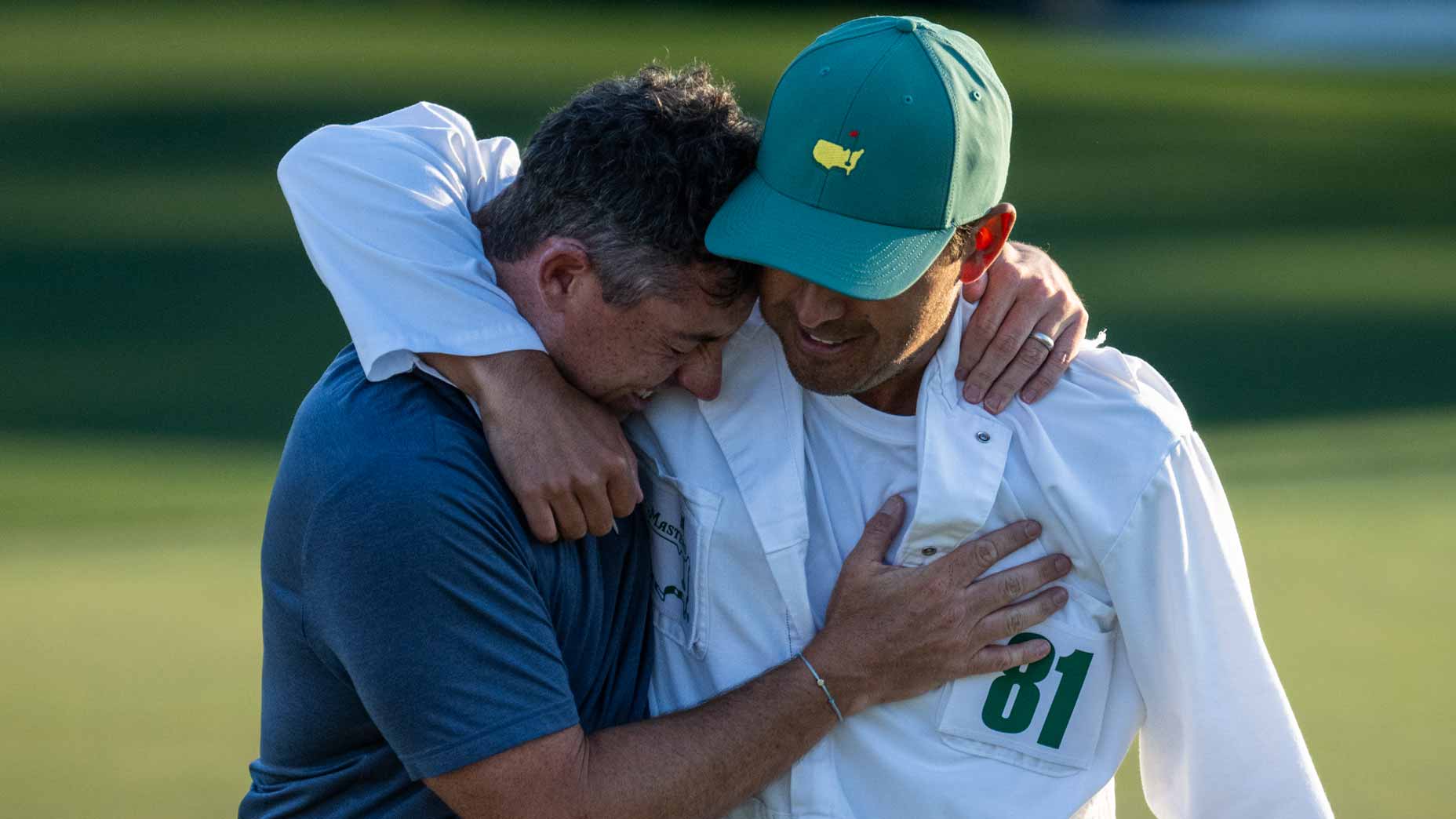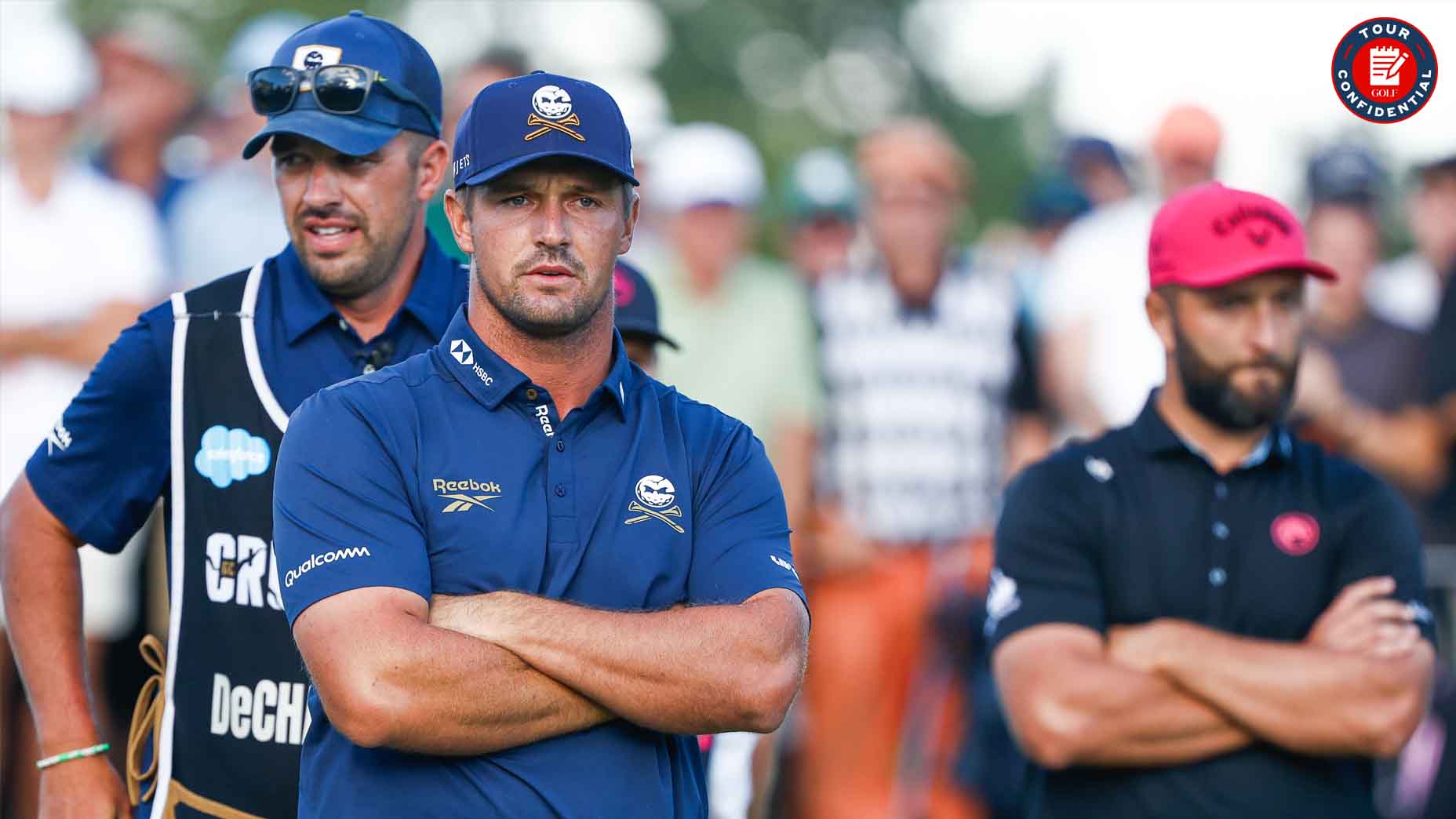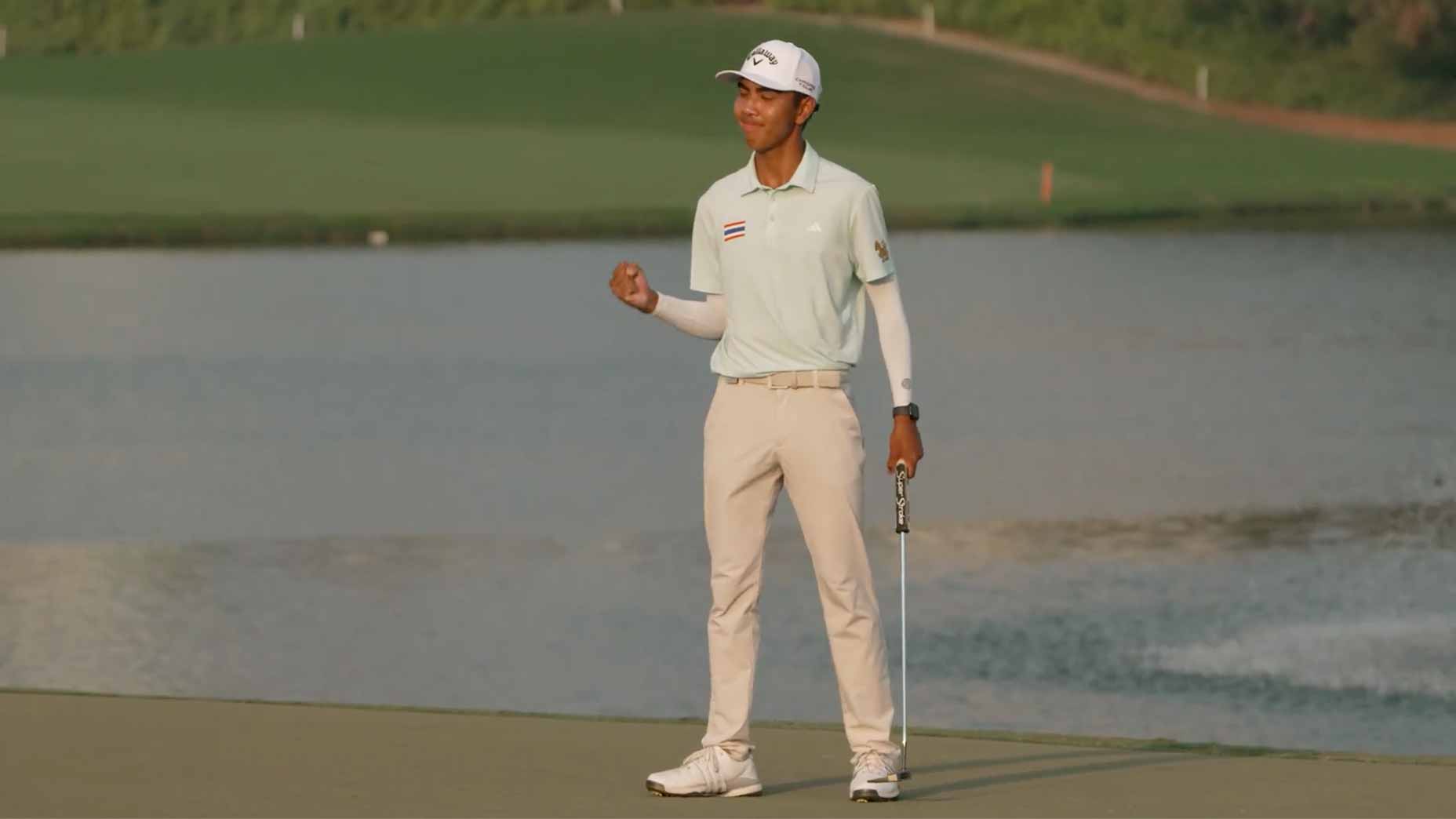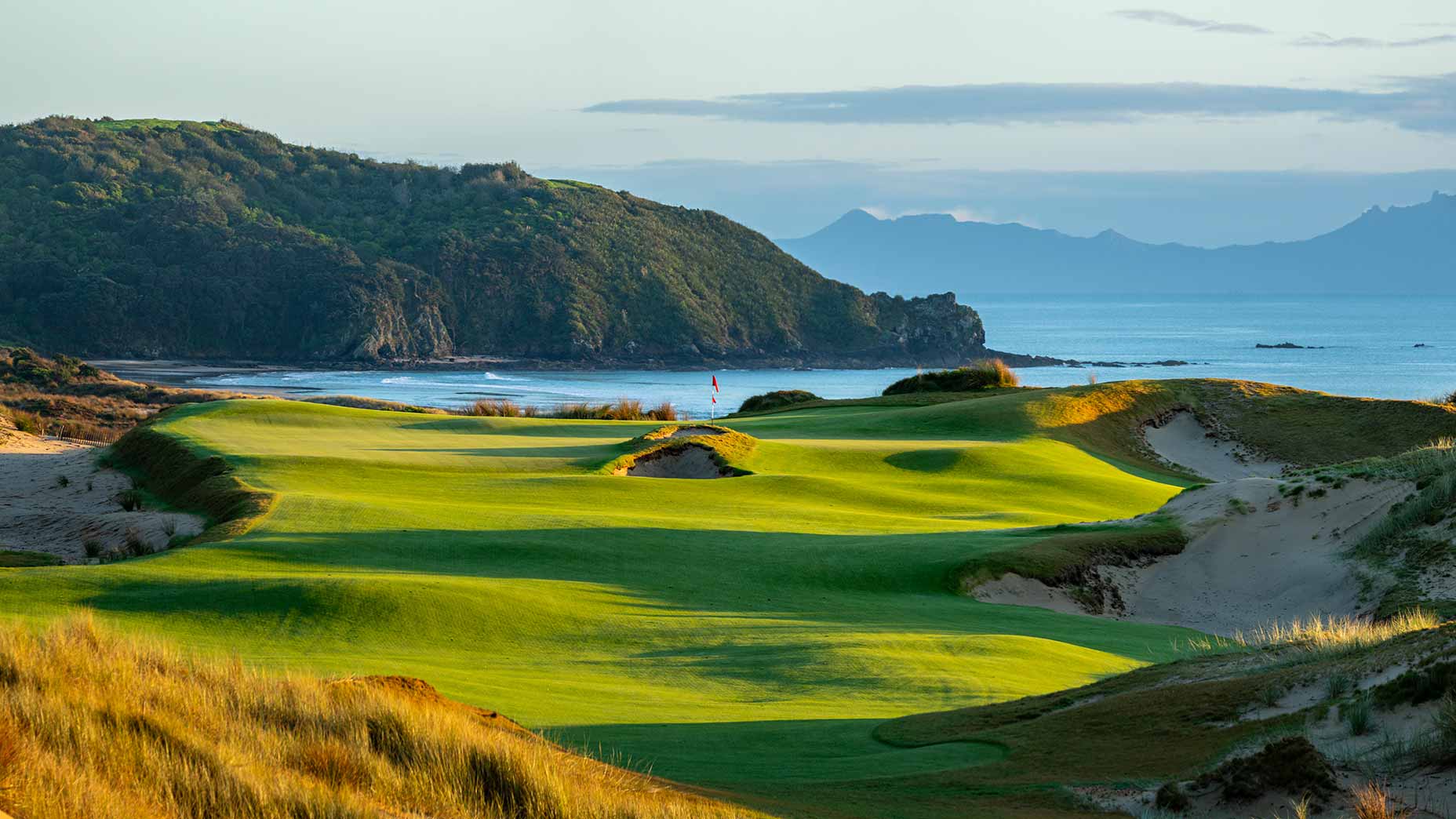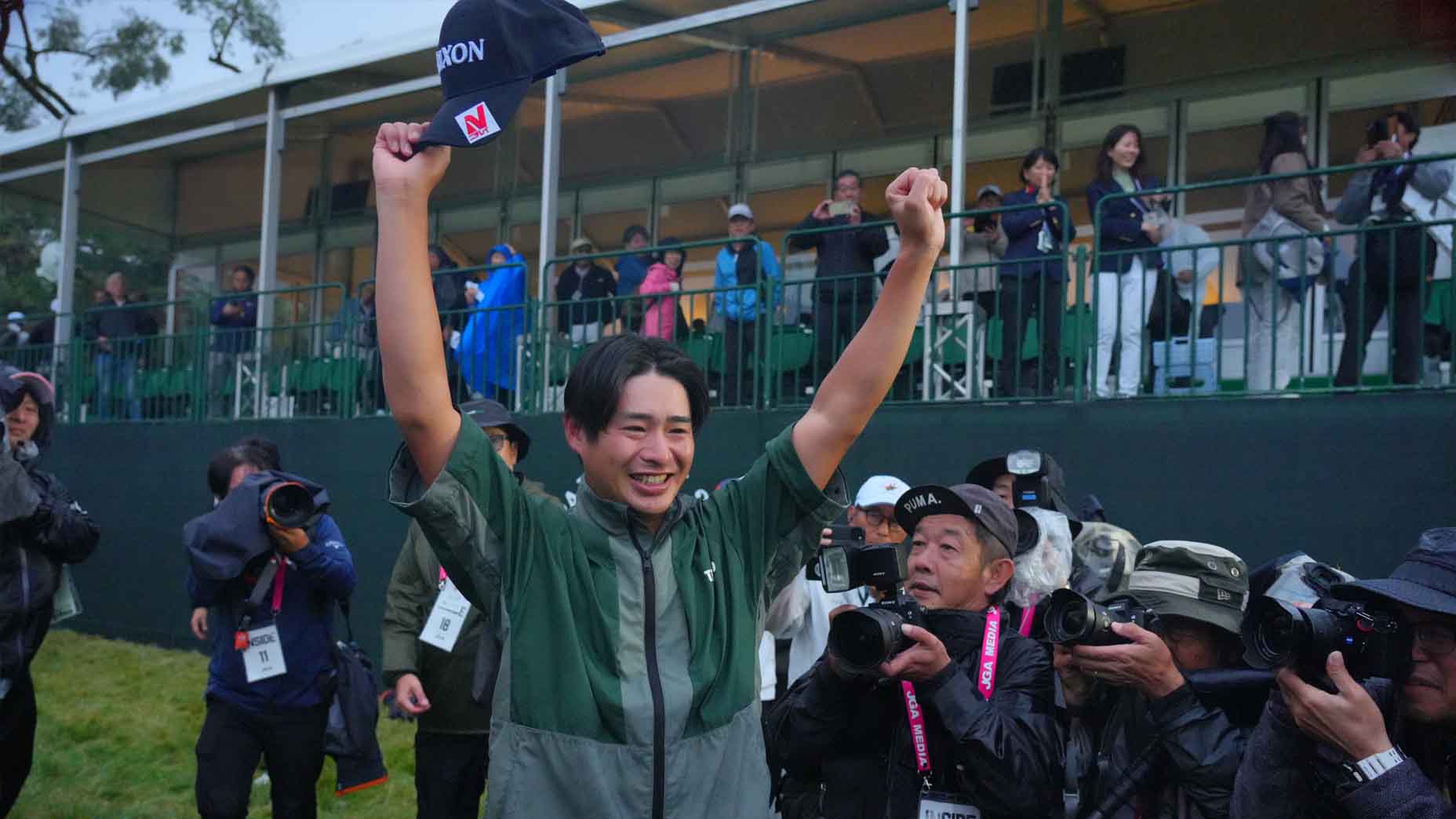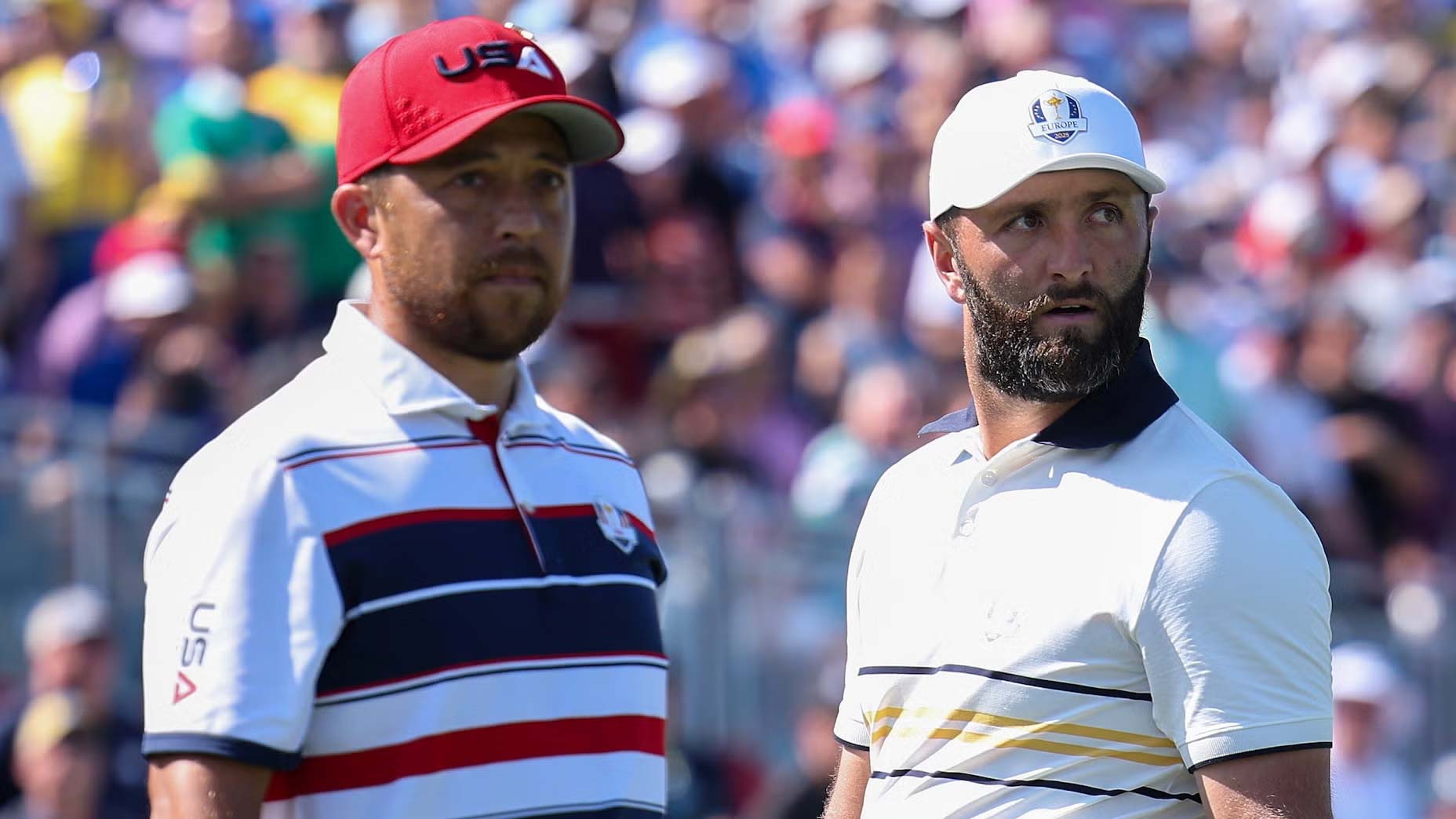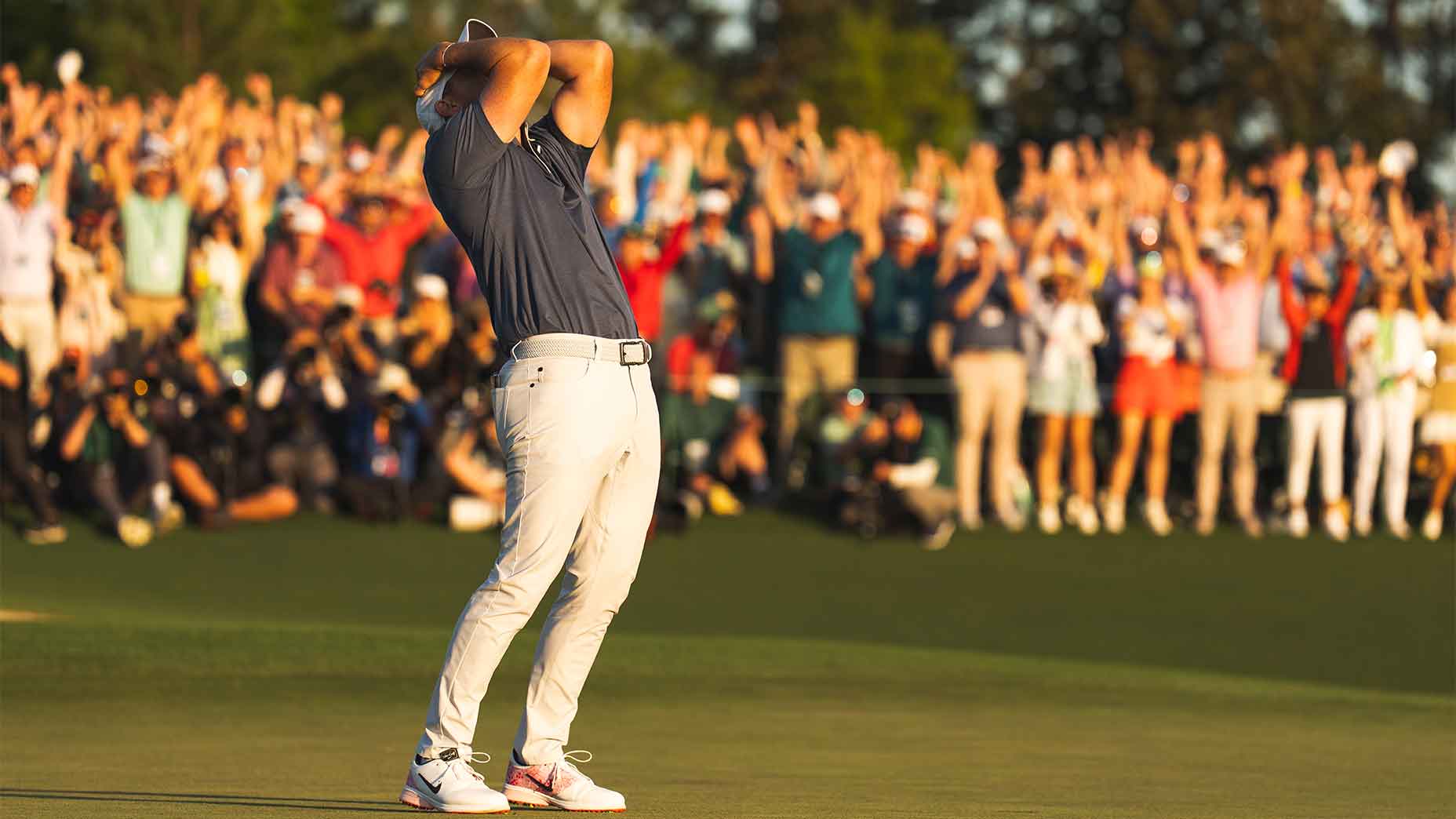They say facts are stubborn things. (Or they used to, at least.) But over the past 89 years, so many phenomenal tales have emerged from the Masters Tournament and its host course that separating what is true from what is lore can be harder than landing a day pass to Berckmans Place. What follows are 100 certifiable facts about the world’s greatest sporting event (except maybe the bit about the curse at Amen Corner).
1. In 1931, Augusta National cofounders Clifford Roberts and Bobby Jones bought the property on which the course is built for $70,000.
2. Roberts was a single-digit handicapper.
3. Jones had won 13 majors when he retired at age 28.
4. On the course, Jones kept a four-leaf-clover medallion attached to his pocket-watch chain.
5. When the Masters was first played, the club had 76 members.
6. Magnolia Lane was a gravel road when Augusta National opened. It was paved in 1947.
7. It is 330 yards long.
8. It is lined, spectacularly, with 61 magnolia trees.
9. In the early days of the club, Roberts and Jones had hoped to host the U.S. Open, but they were turned down.
10. On March 22, 1934, at 9:45 a.m., journeyman Ralph Stonehouse was the first player ever to tee off in a Masters Tournament (then called the Augusta National Invitational).
11. Back then, the club’s nines were reversed; what is now the 1st hole was the 10th hole, etc.
12. Horton Smith won that first Masters with a final score of 284.
13. Jones came out of retirement to compete in the inaugural event and finished 10 strokes back, tied for 13th.
14. In the tournament, Jones took 36, 38, 30 and 32 putts for the four rounds, respectively. (He played the tournament another 11 times.)
15. 1934 Masters winner Horton Smith used a Bobby Jones model driver.
16. In 1935, Gene Sarazen made “the shot heard ’round the world,” a double eagle on the par-5 15th.
17. Jones witnessed it. So did Walter Hagen and Byron Nelson.
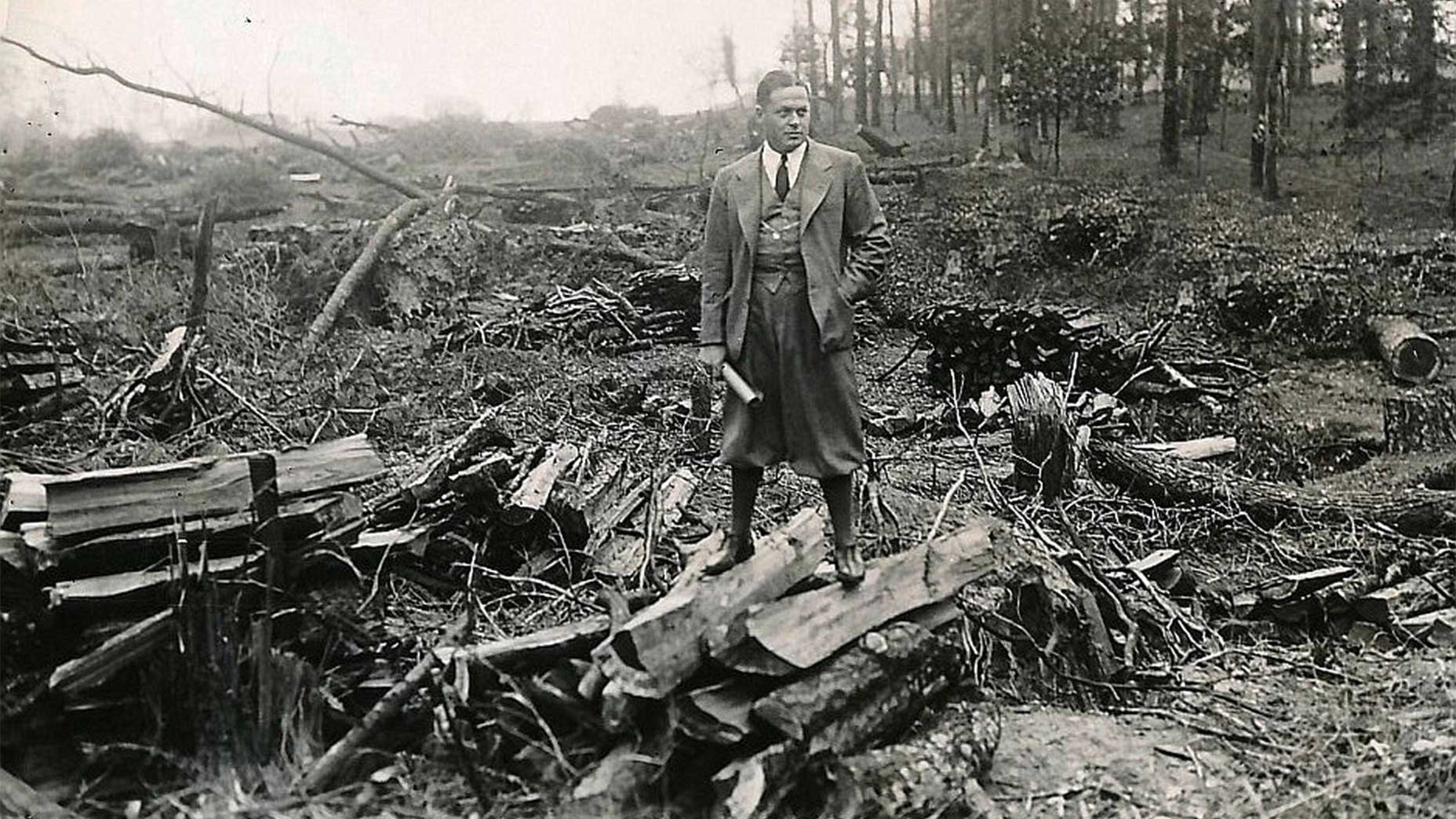
18. Sarazen won that event the next day in a playoff.
19. In the Masters, if you miss the cut, you still receive $10,000.
20. Before the start of the Masters in 1955, each player in the field went to the 15th to see if they could duplicate Sarazen’s double eagle. Nobody did, but Freddie Haas Jr. was the winner, hitting his second shot to just four feet.
21. In 1936, Horton Smith won his second Masters.
22. There have been eight other two-time winners of the event: Byron Nelson (1937, ’42), Ben Hogan (1951, ’53), Tom Watson (1977, ’81), Seve Ballesteros (1980, ’83), Ben Crenshaw (1984, ’95), Bernhard Langer (1985, ’93), José María Olazábal (1994, ’99) and Bubba Watson (2012, ’14).
23. Smilin’ Jimmy Demaret (1940, ’47, ’50) was the Masters Tournament’s first three-time winner.
24. Hogan, preternaturally gifted like so many Masters champions, turned pro at the tender age of 17.
25. As a teenager, Sam Snead — Masters winner in ’49, ’52 and ’54 — ran the 100-yard dash in 10 seconds.
26. Jackie Burke Jr., the ’56 champ, taught judo in the Marines.
27. Charles Coody, 1971 Masters champ, was offered a combo golf and basketball scholarship to Texas Christian University.
28. Bob Goalby, green-jacketed in ’68, earned 11 letters in high school and earned a football scholarship to the University of Illinois.
29. Snead was the first Masters champ to receive a green jacket, which debuted in 1949.
30. A year before, in 1948, Bobby Jones played in his last Masters.
31. In 1952, Hogan (circled) started the Champions Dinner tradition.
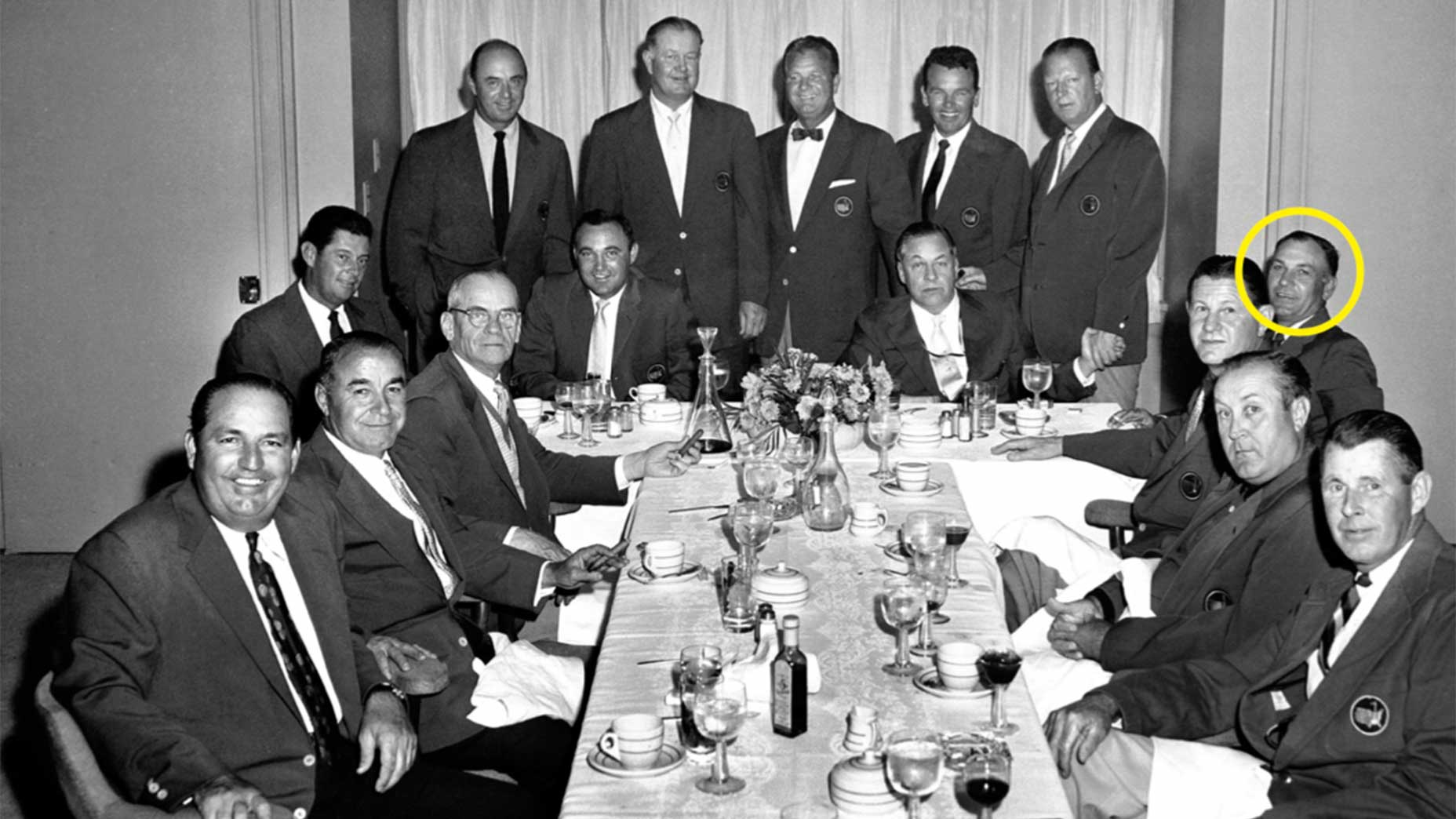
32. CBS began televising the Masters in 1956.
33. Each year’s Masters winner takes home his green jacket, but only for 12 months. Thereafter, the “club coat” stays on Augusta National property.
34. Jack Nicklaus won six green jackets (1963, ’65, ’66, ’72, ’75, ’86) in three different decades.
35. Snead and Gary Player (the winner in 1961, ’74 and ’78) were the first to compete in the Masters in five different decades.
36. Nicklaus’ mother, Helen, attended his first Masters, in 1959, and didn’t return again until 1986.
37. In 1986, at age 46, Nicklaus became the oldest golfer to win the Masters.
38. In 1997, at 21 years, 3 months and 14 days, Tiger Woods (’97, ’01, ’02, ’05, ’19) became the youngest Masters champion.
39. He is one of just three players — with Nicklaus and Nick Faldo — to have won in consecutive years.
40. For each of his back-to-back wins, Woods served up porterhouse steaks at the Champions Dinner.
41. Woods and Jordan Spieth, the 2015 champ, share the record for the lowest 72-hole score: 270.
42. The year Spieth won, he shot the lowest 36-hole score, too: 130.
43. Johnny Miller was the first player to shoot 30 on the front nine, in 1975.
44. Mark Calcavecchia, in 1992, and David Toms, in 1998, both shot a record 29 on Augusta’s second nine.
45. Two players — Nick Price, in 1986, and Greg Norman, in ’96 — shot the course record of 63, but neither has won a Masters.
46. Lloyd Mangrum, in 1940, and Mike Donald, in 1990, both shot 64 in their first-ever rounds at the Masters.
47. Mangrum finished 2nd, Donald finished 47th.
48. In 1965, Ray Floyd, the ’76 champ, shot 69 in his first-ever round at the Masters. In his second round, he was paired with Arnold Palmer and followed his 69 with an 83.
49. In 2016, Ernie Els posted a record worst score of 9 on the first hole. He took six putts.
50. In 2012, Louis Oosthuizen became the only player to score a double-eagle 2 on the par-5 2nd hole.
51. In 1992, Jeff Sluman became the only player to ever ace the 4th hole.
52. If Sluman were looking closely, he’d have seen the only palm tree on the course — by the 4th green.
53. In 1967, Bruce Delvin became the only player to score a double-eagle 2 on the par-5 8th hole.
54. The highest score ever posted on the 8th is a 12, by two-time Tour winner Frank Walsh in 1935.
55. Three players — Claude Harmon, Bill Hyndman and Curtis Strange — have aced the par-3 12th.
56. In 1980, Tom Weiskopf made a record 13 on that same hole, the highest score over par on any hole in Masters history.
57. In his book The Story of Augusta National Golf Club, Clifford Roberts claims that during construction of the course they found an Indian burial ground in the area of the 12th green. This might explain No. 56.
6 ways a November Masters will be different than April, according to expertsBy: Josh Sens
58. In 2018, Sergio García made an octuple-bogey 13 on the 15th hole, 11 strokes worse than Sarazen’s historic albatross in 1935.
59. Twenty-two players have aced the 16th.
60. Three of them — Oosthuizen, Shane Lowry and Davis Love III — did it at the 2016 Masters.
61. Seven people have posted an 8 on the par-4 finishing hole.
62. Through 2019, 52 golfers have been crowned Masters champion.
63. Art Wall, the 1959 winner, has the shortest name of all of them.
64. And 37 of them are from the United States.
65. Byron Nelson played his 100th Masters round in 1964, at age 52.
66. At age 54, Ben Hogan shot 66 in the third round of the 1967 Masters.
67. Tommy Aaron, the ’73 winner, was the first Masters champion to wear eye-glasses. Vijay Singh wore specs and won in 2000.
68. Aaron’s final-round playing partner, Johnny Miller, wrote down the wrong score on Aaron’s card. Aaron caught the mistake before he signed it.
69. In 1961, two-time PGA Tour winner Jim Turnesa missed the cut because he incorrectly signed for a higher score.
70. In 1952, Aussie pro Norman Von Nida flew 50 hours from Australia to compete in the Masters. His 27th-place finish didn’t cover the cost of his airfare.
71. In 1956, Jackie Burke Jr. went to church and showed up 15 minutes before his Sunday tee time. He still won.
72. George Cobb, with input from Clifford Roberts, designed ANGC’S Par-3 Course, which opened in 1958.
73. The course totals 1,060 yards.
74. The first year of the Par-3 Contest was 1960.
75. Sam Snead won it.
76. There have been 100 holes in one during the Par-3 Contest with a record nine in 2016.
77. In Phil Mickelson’s first 100 rounds at the Masters, he had 53 rounds under par, with a scoring average of 71.27.
78. At Augusta National, there are three bridges named after Masters winners: Hogan (on the 12th), Nelson (on the 13th) and Sarazen (on the 15th).
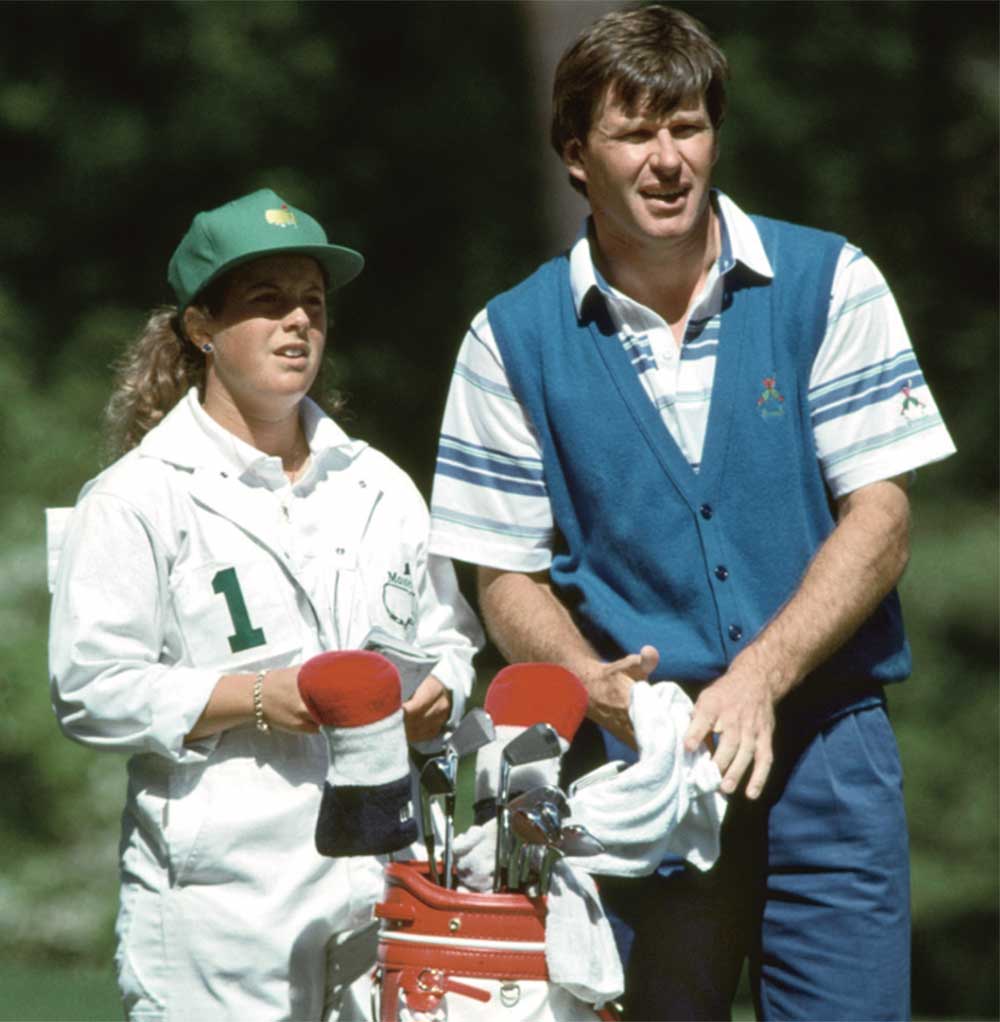
79. At the 1971 Masters, Clifford Roberts suggested that Ben Crenshaw get a haircut — and he did.
80. On Sept. 29, 1977, at age 83, Roberts committed suicide on Augusta National property.
81. His ashes are buried there. No one will say where.
82. Bobby Jones is the president of Augusta National in perpetuity.
83. The first year players were allowed to bring their own caddies was 1983.
84. In 1983, 18-year-old college student Liz Archer, on the bag for her father, 1969 Masters champion George Archer, became the first female caddie at the Masters Tournament.
85. In 1990, working Nick Faldo’s bag, Fanny Sunesson became the first and only female caddie to win at the Masters.
86. In 1953, Augusta National built the Eisenhower Cabin for President Dwight D. Eisenhower, who took office in January of that year.
87. The cabin was designed, in part, by the Secret Service.
88. During his eight-year term, Ike visited ANGC 29 times and played 210 times.
89. The iconic Eisenhower Tree, a century-plus-old loblolly pine that guarded the 17th hole’s left fairway, was removed in 2014 after suffering damage in an ice storm. To date, it has not been replaced.
90. In 1981, the Augusta National greens were switched from bermuda grass to bentgrass.
91. Today, there are 44 bunkers on the course — 32 are greenside and 12 are on the fairways.
92. Just past the 11th tee there’s a private outhouse, for players only.
93. In 1994, 80,000 patrons attended the practice rounds.
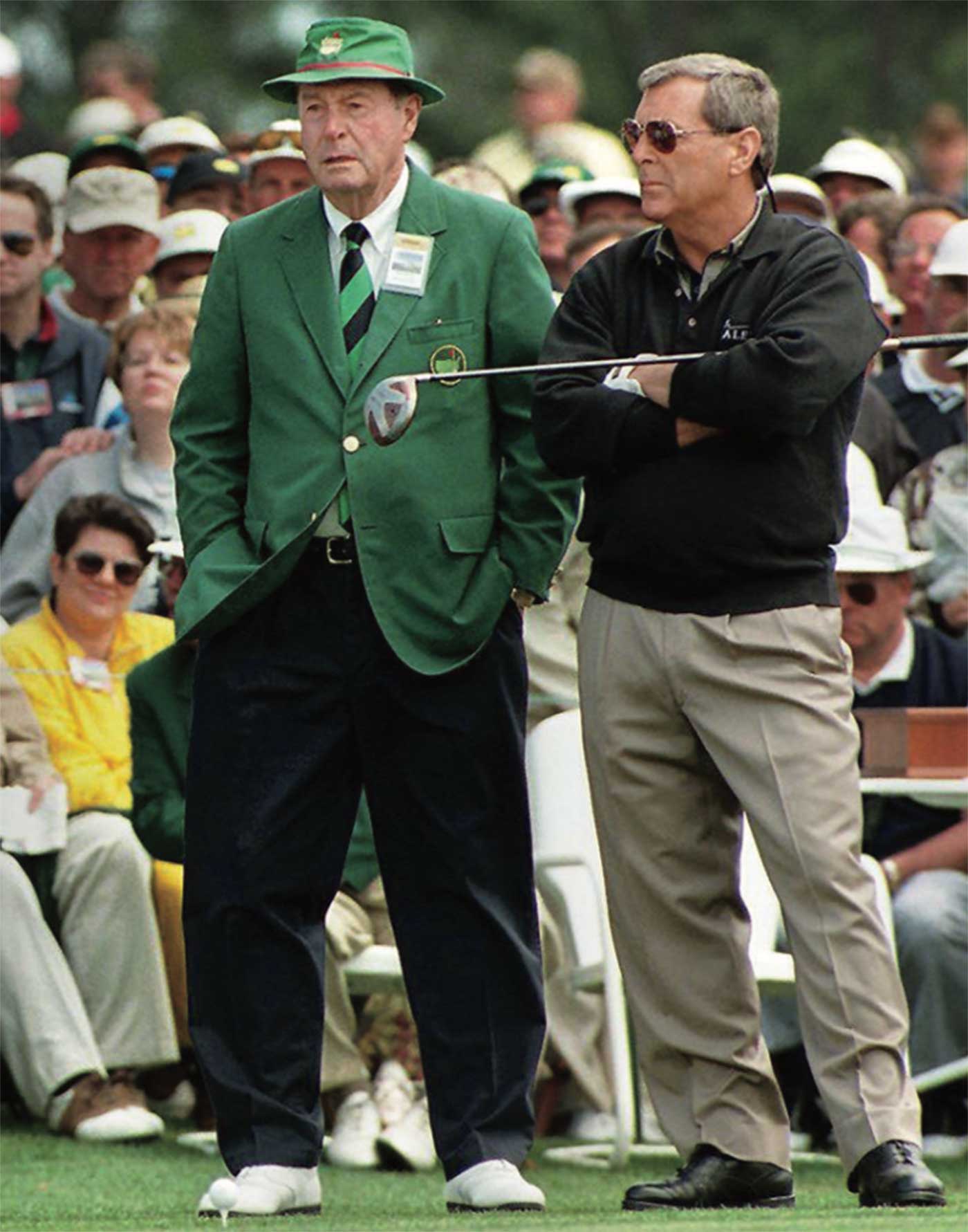
94. In 1995, the first year of the lottery for practice-round tickets, the club received 250,000 applications.
95. The practice area, overhauled in 2010 and considered the greatest in the world, used to be a parking lot for the tournament.
96. Augusta member Phil Harison was the tournament’s first-tee announcer for more than 50 years and coined the phrase “Fore please, now driving.”
97. For the price of a moderate hotel room, members and guests can stay in one of the 10 cabins on the grounds of Augusta National.
98. Masters winners are welcome to return to Augusta National to play the course with a guest, but they still have to be joined by a member.
99. The initiation fee for members at the impossibly exclusive club is estimated to be an unexpectedly low $40,000.
100. If you don’t receive your bill at the end of the month, you know you are no longer a member.
Rick Grayson is a GOLF Top 100 Teacher and a Teaching Professional at the Connie Morris Golf Learning Center at Rivercut Golf Course in Springfield, Mo.
